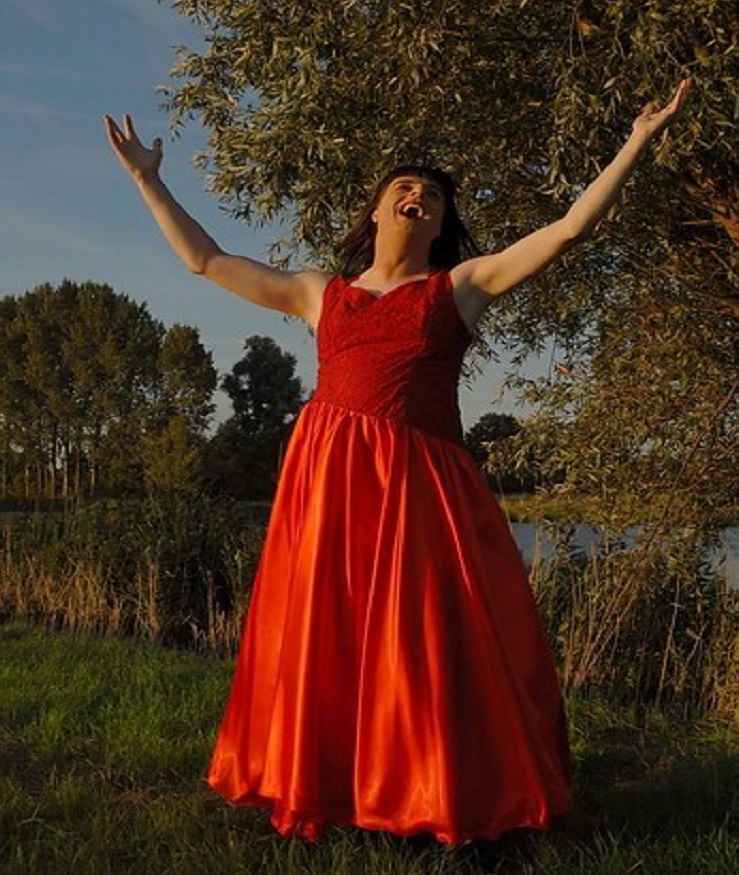Classical Singing and Voice Lessons!
Why Classical Singing Lessons are Important
Classical singing lessons are important for several reasons. First – they provide a solid foundation of vocal technique that can be applied to any genre of music. By focusing on breath control, posture, and proper vocal placement, classical training helps singers develop healthy and sustainable sound production. This is crucial for singers who want to perform for extended periods without straining their voices.
Second – classical voice lessons teach musicians the art of interpretation. Through studying and performing classical repertoire, singers learn how to bring emotion and expression into their performances. They learn about phrasing, dynamics, and the nuances of different musical styles. This not only enhances their ability to connect with audiences but also helps them become more versatile performers.
Last – classical singing lessons offer opportunities for personal growth and self-expression. Singing is not just about hitting the right notes; it is a form of artistic communication that allows individuals to express themselves authentically. Classical training provides a safe space for singers to explore their unique voice qualities and discover their own artistic identity. It fosters confidence, creativity, and self-discovery in aspiring musicians.

Understanding the Basics of Classical Singing
Classical singing is a specific style of vocal performance that focuses on producing sound in a way that emphasizes clarity, precision, and artistry. It is rooted in the traditions of Western music and has been practiced for centuries. To understand the basics of classical singing, it is important to grasp concepts such as breath control, vocal resonance, and proper posture.
Breath control is fundamental for this type of singing as it allows singers to sustain long phrases and create a wide range of dynamics. Singers are trained to use their diaphragm and engage abdominal muscles to support their breath flow while maintaining a relaxed posture. This enables them to maintain consistent tone quality throughout their range.
Vocal resonance refers to how sound vibrations resonate within the body when producing sound. In classical singing, singers aim to achieve balanced resonance by using different resonators such as the chest, throat, mouth, and nasal cavities. By mastering this technique, singers can create a rich and full-bodied tone that carries well in large concert halls.
Proper posture plays an essential role as it ensures optimal breath support and vocal production. Singers must maintain an aligned spine with relaxed shoulders and neck muscles to allow for efficient airflow through the respiratory system. Additionally, correct posture promotes good vocal health by preventing strain or injury during extended periods of practice or performance.
Understanding these basic principles of classical singing provides a strong foundation for aspiring singers who wish to explore this traditional form of musical expression further.
The Benefits of Classical Voice Lessons
Classical voice training offers a myriad of benefits for aspiring singers. Firstly, it helps develop proper vocal technique and control. Through specialized exercises and techniques, students learn how to properly support their breath, project their voice, and produce clear and resonant tones. This not only enhances their overall vocal quality but also prevents potential strain or injury to the vocal cords.
Additionally, voice training improves musicianship skills. By studying classical repertoire from different time periods and composers, students gain a deep understanding of musicality, phrasing, interpretation, and expression. They learn how to convey emotions through their voice and bring life to the music they sing.
Singing lessons provide a solid foundation for any genre of music. The techniques learned in classical training can be applied to various styles such as pop, jazz, or musical theater. By mastering the fundamentals of breath control and proper vocal placement in a classical context, singers are equipped with the tools necessary to explore different genres while maintaining healthy vocal production.
Classical voice training offers numerous advantages including improved technique and control, enhanced musicianship skills, as well as versatility across different musical genres. Whether one’s goal is to pursue a career in opera or simply enjoy singing as a hobby or form of self-expression, investing in lessons can greatly contribute to one’s growth as a vocalist.

Singing Techniques for improving your Voice
One technique for improving your skills is to focus on breath control. Proper breath support is essential for producing a rich and powerful sound. Singers can practice deep breathing exercises to strengthen their diaphragm muscles and improve their lung capacity. This will allow them to sustain long phrases and produce a steady, controlled tone.
Another technique is to work on posture and body alignment. Maintaining good posture while singing helps optimize vocal production and prevents strain or tension in the body. Singers should aim to have relaxed shoulders, an elongated spine, and a lifted sternum. They can practice standing against a wall or using a mirror to ensure proper alignment throughout their singing sessions.
Additionally, singers can benefit from regular vocal warm-up exercises. These warm-ups help relax the vocal cords, increase flexibility, and prepare the voice for a more demanding repertoire. Vocal exercises such as lip trills, sirens, tongue rolls, and scales can be used to gently warm up the voice before diving into more challenging pieces of music. Consistent practice of these techniques will contribute to your improved classical singing voice and skills over time.
Incorporating Contemporary Elements into Classical Singing
Incorporating contemporary elements can add versatility and creativity to your vocal performances. While classical singing focuses on strict adherence to the established techniques and repertoire of opera and art songs, incorporating contemporary elements allows singers to explore different vocal styles and genres. By learning how to blend classical vocal techniques with modern approaches, singers can bring a fresh perspective to traditional pieces, making them more relatable and accessible to modern audiences.
One way to incorporate contemporary elements is through interpretation. Classical singers can experiment with phrasing, dynamics, and articulation, adding their own unique interpretations to the music while still maintaining the integrity of the original piece. This allows for a more personal connection between the singer and the audience, as well as an opportunity for self-expression within a traditionally rigid genre.
Another way to incorporate contemporary elements is through vocal effects. Classical singers can experiment with vibrato, riffs, runs, and other embellishments typically associated with pop or jazz singing. By using these techniques sparingly and tastefully, singers can inject their performances with individuality while still honoring the essence of the traditional style.
Incorporating contemporary elements into classical singing allows for a dynamic fusion of old and new styles that can captivate audiences in innovative ways. It opens up possibilities for experimentation and self-expression while staying true to the foundations of classical technique.
Finding the right classical voice teacher
Finding the right teacher is crucial for those aspiring to improve their vocal skills in this particular genre. One important factor to consider is the teacher’s experience and qualifications. Look for someone who has a solid background in classical music, preferably with a degree or extensive training in vocal performance. A knowledgeable and skilled teacher will not only guide you through proper technique but also help you understand the nuances of classical singing.
Another aspect to consider is the teaching style and approach of potential teachers. Each individual has different learning styles, so finding a teacher whose methods align with your needs is essential. Some teachers may focus more on technical aspects while others emphasize interpretation and musicality. It’s important to have clear communication with prospective teachers about your goals and expectations to ensure compatibility.
Personal chemistry between student and teacher can greatly enhance the learning experience. Classical singing requires vulnerability as it involves expressing emotions through one’s voice, so it’s crucial to feel comfortable working closely with your instructor. Don’t hesitate to attend trial lessons or ask for recommendations from other students before committing long-term, as finding the right fit can greatly impact your progress as a singer in the world of classical music.
Conclusion: Embracing the beauty of Classical singing
Embracing the beauty of classical singing is a transformative experience that goes beyond simply learning how to sing. Lessons provide students with the opportunity to connect with centuries of musical tradition and express themselves in a unique and powerful way. By studying classical vocal techniques, students are not only trained to improve their vocal skills but also gain a deeper understanding of music history and interpretation.
Classical singing allows individuals to tap into the full potential of their voice. The rich tonal quality and range required in classical repertoire push singers to explore and develop their vocal abilities to their fullest extent. This comprehensive training not only enhances technical proficiency but also builds confidence and stage presence.
Ultimately, embracing the beauty of singing opens doors to endless possibilities for personal growth as well as professional opportunities in the world of music. Whether aspiring to become an opera singer or simply wanting to enhance one’s musicality, delving into the realm of classical vocal training is undoubtedly a rewarding journey that will leave a lasting impact on any student brave enough to embark upon it.
Learn How to Sing High Notes
Have you always wanted to sing higher? If you are a singer, chances are you want to improve how your high notes sound. While there are a lot of ideas on how you can get this done, some of them are quite misleading. This article highlights some of the effective tips...
How To Sing in Harmony (Learn to Harmonize)
If you listen to the radio, you can easily find several harmonies. You won’t only hear them during the chorus, but you can also find them sprinkled through the rest of the track. Most of the time, the harmony part will be layered in the background, just lifting a line...
Learn How To Sing In These Seven Steps
Learning how to sing involves a series of steps, start with vocal warm-ups and some breathing exercises to help you find your range. Upon finding your range, develop your voice by singing your vowels, using your nose and diaphragm, and hitting high notes. To learn how...


